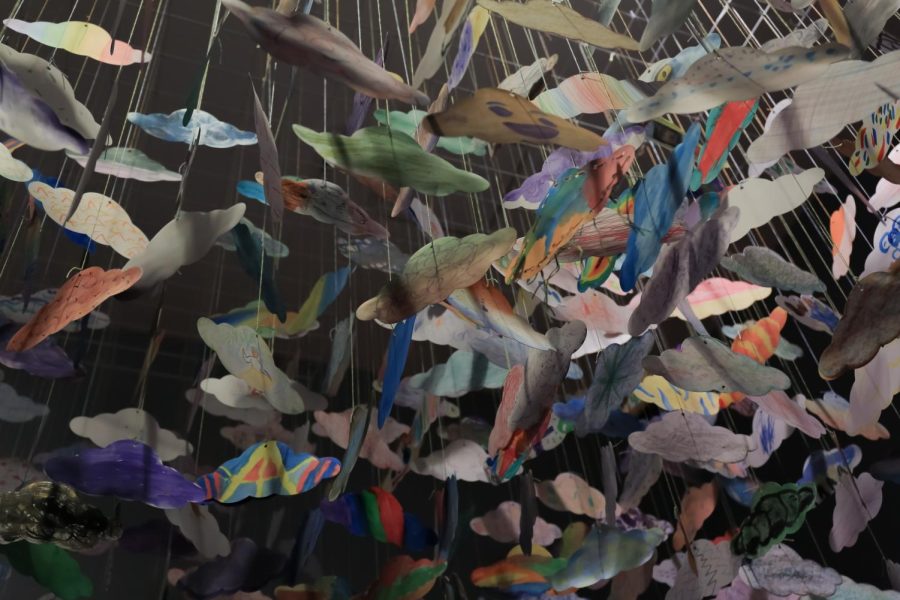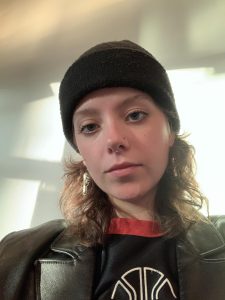Jarvis: Art Matters — Pay Your Workers Like It
The “air” installation at the Utah Museum of Fine Arts on Sept. 21, 2022. This installation invites viewers to experience the realities and costs of poor air quality, particularly that of the Salt Lake Valley, which disproportionately harms marginalized communities. (Photo by Jack Gambassi | The Daily Utah Chronicle)
April 7, 2023
Art is a cornerstone of human culture. Yet, institutions often treat it as non-essential in comparison to other school subjects, jobs and hobbies.
Not everyone can afford to do the art that interests them. Richer people are much more likely to pursue a creative profession, partially because they have a safety net to fall back on. Consequently, the number of working-class people in arts professions has greatly declined in the last fifty years.
It shouldn’t have to be this way. Prioritizing people’s basic needs by paying them a living wage would provide more space for everyone to do art. We also need to raise awareness for local opportunities available for artists in the community.
The Value of Art
One of the biggest barriers to creating art is how expensive it can be. Many college students choose to pursue a degree that guarantees more money despite wanting an education in the arts. I don’t blame them — the starving artist stereotype can ring true. But what if artists could take their time on each project without having to worry about putting food on the table?
A government-run program in Ireland began sending $350 per week to artists last year to help them focus on their art. The program will last three years. So far, according to participants, it’s been helpful, even “transformative.” The U.S. government is surely capable of conducting a similar program.
Kids need space to make art too. Having art in schools makes students more engaged in other areas and ultimately leads to more success in their lives. Unfortunately, schools on a tight budget often cut art in favor of other programs, such as sports. And universities, including the University of Utah, undervalue their art programs.
People who don’t want a career in art should also have the means to afford creative outlets, as they improve self-care and are often used in therapy settings. Engaging in art has a positive impact on mental health and can offer valuable perspective.
“They’re a mirror for our stories and our society,” said Felicia Baca, director of the Salt Lake City Arts Council. “The arts are so much about a deep sense of engagement and belonging and connecting with your communities.”
The Cost of Living
Creating art isn’t accessible for everyone. Employers need to pay their employees a living wage that allows them to afford leisure and hobbies, including those in the arts industry. But this feels unfathomable considering the state of the economy.
In many states, the minimum wage is not sufficient to live on. Increasing the federal minimum wage would raise 1.3 million families out of poverty, yet Utah and other states have kept it at a mere $7.25 while the cost of living steepens.
Inflation has quickly risen in the past few years, in part due to the pandemic. We have seen record highs in food and gas prices in the last two years. And Utah landlords have raised rent to unaffordable prices, which shows through the state’s high rates of homelessness. Trying to get by as an artist in Utah could be a nightmare, especially for those already experiencing poverty.
Poverty rates are highest among people of color, queer people, women and the disabled, making art less accessible for these groups. U.S. art museums also appreciate art from these communities less, with 87% of featured art coming from male artists and 85% from white artists. Making art more widely available by paying workers enough could help change this statistic.
Some local organizations work to increase access to art in various ways. The Salt Lake City Arts Council is involved in two projects, Thriving in Place and Housing SLC, which focus on increasing housing stability and mitigating gentrification. This will help “preserve all the wonderful arts businesses that we have,” Baca said. The Arts Council also works to employ artists through various grants and programs.
Clever Octopus, a creative reuse center in Salt Lake City, sells a wide range of art materials for low prices and provides mini grants for teachers to share art with their students. They also run youth workshops and affordable community classes. Additionally, the Lassonde Institute at the U has a variety of tools that students can use for free. We can help by supporting local artists, especially Black or queer artists, buying their art or telling our friends about them.
All people deserve to afford and enjoy the benefits of art.








